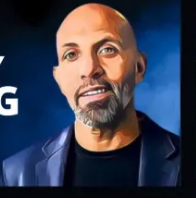By Pat Donnelly
Who knew that at the time of the French Revolution, the vast majority (about 75 per cent) of the population of France did not speak fluent French?
Apparently, Catalan was big in those days. So was Breton. As one French official wrote in 1794: “Federalism and superstition speak Breton, emigration and hatred of the Republic speak German, the counter-revolution speaks Italian and fanaticism speaks Basque.”
These surprising historical details are among many that jump off the page while reading Jean-Benoit Nadeau and Julie Barlow’s The Story of French, an ambitious work that places our own French-vs.- English language squabbles within the context of the 1,000-year history of the French language.
This means that Rene Levesque rates one passing mention, Pierre Elliott Trudeau rates two and Robert Bourassa, the father of Bill 22, zero.
But that’s what happens when you try to make sense of the evolution of a language spoken by more than 175 million people in 63 countries around the world. The big picture becomes very big and even huge personalities like Louis XIV, a.k.a. the Sun King, and Napoleon Bonaparte are relegated to cameo appearances within the sweep of history.
Francois I, however, gets a lot of ink. He was the dashing young king who reduced the power of the church and brought an end to the dominance of Latin with the Ordinance of Villers-Cotterets in 1539. An early voice for modernity, he encouraged the arts and loved to party. (The Andre Boisclair of his time?)
Chapter 1 begins with this provocative statement: “Very few people know that French has its place in the world not in spite of English, but because of it.”
Why? For one thing, nearly half of the commonly used words in English are derived from French. It was a base language for English, much as Latin laid the groundwork for French. Only French remains a living language, minting new words, while Latin is thought of as “dead.” Because French has this insider status within English, it “surfs” along wherever English goes in the world. To understand this special relationship, it helps to be reminded that when William the Conqueror, formerly the Duke of Normandy, conquered England in the 11th century, he began a 400-year reign of French rulers in England. When it was over, the snob appeal of French remained, along with shared vocabulary. Thus, the spread of French across the globe benefited indirectly from English colonialism as well as directly from French colonialism, missionary work, the Crusades, fleeing Huguenots, the influence of French geniuses like Voltaire and the appeal of the language itself as a clear, efficient common means of communication in Europe.
In 2003, with their previous book, Sixty Million Frenchman Can’t Be Wrong, the Barlow-Nadeau duo painted an anthropologically informed portrait of the French in France. For The Story of French, they consulted top linguists to explore the character, resiliency and international popularity of a language that has spawned the Francophonie.
One misconception they labour to correct is the idea that English predominates because it has a wider-ranging vocabulary than French. While they say that the Oxford Dictionary may have 600,000 entries compared with Le Robert’s 100,000, they explain that’s just because the editors of these dictionaries have different ideas about what a dictionary should do and what should be included within its pages. An English dictionary is more of an inventory, say Nadeau and Barlow, packed tight with seldom-used words. French dictionaries, on the other hand, discard archaic terms and snub technical ones. If you add those into the French dictionary, as linguist Henriette Walter did in 1987, adding 175,000 terms from 19th- and 20th- century literature, plus a half-million technical terms and a whack of new words invented since the 1960s, the balance shifts in favour of French vocabulary for a total of 1.2 million words – plus change.
Many pages are spent explaining France’s Academie francaise, an institution founded in the 17th century mainly to create a dictionary and now regarded as as museum full of rule-obsessed fuddy duddies who insist on a standard French, or a “norme,” that doesn’t really exist except on the page.
“Language purism rears its head every day in the professional life of francophones,” the authors write, citing their own battles with a French editor over use of the word mondialisateur (globalizer) for a French edition. They lost. “Because it’s not French,” they were told.
Also fascinating is the book’s exploration of the state of French in countries like Senegal and the extent to which francophone nations are bypassing France as they connect with each other.
“This vitality is one of the reasons why francophones have their own star system in literature, film, music and more, in spite of the global reach of American pop culture,” according to Nadeau and Barlow. “Celine Dion and Gerard Depardieu may be the only names known to non-francophones, but singers such as Garou and Johnny Hallyday, poets such as Luc Plamondon and Amadou Kourouma, authors such as Michel Houellebecq and Tahar Ben Jelloun, and actors such as Gad Elmaleh or Djamel Debbouze are household names among francophones all over the world.”
Every Canadian should read this book. It falls on the populist side of academic. But there’s no denying that it’s a dense, challenging read, with some redundancy and an awful lot of detail about things like the declining usage of the passe simple. On one occasion the co-authors move too fast, writing that post- Second World War “more than 75 per cent of immigrants to Quebec chose to school their children in English,” without mentioning that immigrants were once forbidden access to French schools.
But that’s a quibble. Those who do make their way through The Story of French will find it a mind-altering experience.









